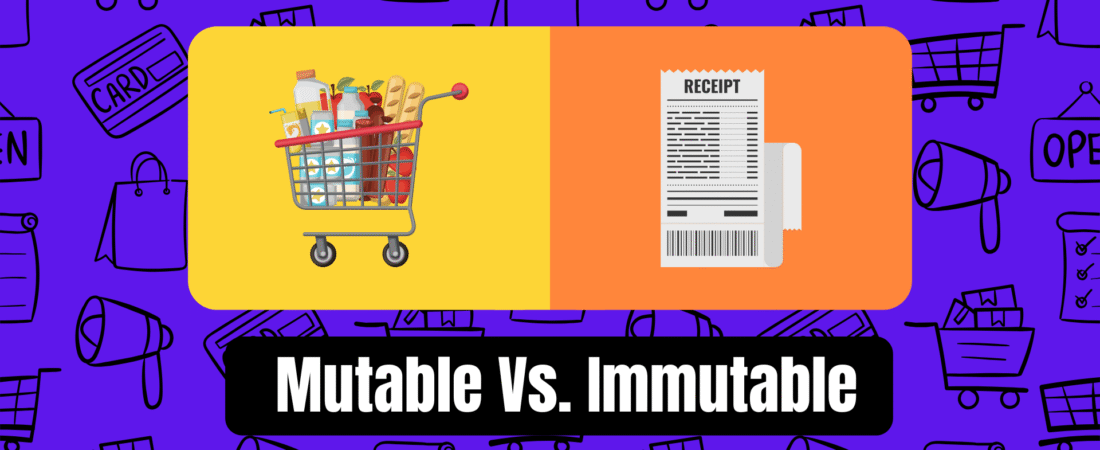When you hear the words 𝙢𝙪𝙩𝙖𝙗𝙡𝙚 and 𝙞𝙢𝙢𝙪𝙩𝙖𝙗𝙡𝙚, you might think they belong to complex technical concepts. But the idea behind these words is actually very simple and closely related to things we experience in our day-to-day lives. Understanding the difference between mutable and immutable can also help you grasp some important programming concepts.
- 𝗪𝗵𝗮𝘁 𝗗𝗼𝗲𝘀 𝗠𝘂𝘁𝗮𝗯𝗹𝗲 𝗠𝗲𝗮𝗻?
𝗠𝘂𝘁𝗮𝗯𝗹𝗲 means something that can be changed or modified after it’s made 𝘸𝘪𝘵𝘩𝘰𝘶𝘵 creating a brand new thing.
Think of your 𝗰𝗹𝗼𝘁𝗵𝗲𝘀 𝗰𝗹𝗼𝘀𝗲𝘁. You can add new clothes, take out old ones, or rearrange them however you want. The closet itself stays the same, but you can change the contents inside it. That’s the concept of mutability.
imagine your 𝘀𝗵𝗼𝗽𝗽𝗶𝗻𝗴 𝗰𝗮𝗿𝘁 at the store. You can add new items or remove items as you want, but the cart itself doesn’t change. it stays the same. Your shopping cart is 𝙢𝙪𝙩𝙖𝙗𝙡𝙚 because you can change what’s inside it without replacing the whole cart. - 𝗪𝗵𝗮𝘁 𝗗𝗼𝗲𝘀 𝗜𝗺𝗺𝘂𝘁𝗮𝗯𝗹𝗲 𝗠𝗲𝗮𝗻?
𝗜𝗺𝗺𝘂𝘁𝗮𝗯𝗹𝗲 means something that cannot be changed after it is created. If you want to change it, you have to create a brand new one instead of modifying the original.
Think of a 𝗽𝗿𝗶𝗻𝘁𝗲𝗱 𝗽𝗵𝗼𝘁𝗼𝗴𝗿𝗮𝗽𝗵. Once you’ve printed it, you can’t change what’s on the photo. If you want a different image, you need to print a new photo.
Or consider a 𝗿𝗲𝗰𝗲𝗶𝗽𝘁 you get after buying items. It shows exactly what you paid for, and once printed, it cannot be changed. If you forget to buy an item and want to add it later, you don’t change the old receipt. instead, you get a new one for the new purchase. - 𝗪𝗵𝘆 𝗗𝗼𝗲𝘀 𝗧𝗵𝗶𝘀 𝗠𝗮𝘁𝘁𝗲𝗿?
Understanding the concept of mutable vs immutable is especially important in programming.
When data or objects are 𝗺𝘂𝘁𝗮𝗯𝗹𝗲, they can be changed quickly without replacing them entirely. This makes it easy to update things like lists of user inputs or inventory items.
When data or objects are 𝗶𝗺𝗺𝘂𝘁𝗮𝗯𝗹𝗲, programmers know these values won’t change during the program’s execution. This allows them to safely store data that must stay constant, like configuration details or fixed records, without worrying that some part of the program will accidentally alter them.
This simple but powerful idea about mutability helps programmers write better, more reliable code — and now you understand it too, through everyday objects around you!

